A Mango Tree Grows in Virgil Village
A story of neighbors growing their own food to preserve their roots
The following dispatch was written by Ali Rachel Pearl and Samanta Helou Hernandez, with photos by Samanta. The story switches between our voices as we walk you through our neighborhood’s plants and introduce you to the people who grow them.
Ali: One day early in the pandemic, my neighbor Luis and I were standing under the shade of the huge avocado tree on our block. Luis is around my father’s age and lives in the apartment complex next to mine. He was born in the Mexican state of Jalisco and came to the U.S. when he was 18 where he eventually got married and had a kid. He has lived on our block for 35 years. At some point a few years ago, I started referring to him as my LA dad because he does a lot of dad-like things, like clean my forever-dirty car windshield and ask me to help him with technology stuff. We have spent many pandemic hours chatting outside together, hours filled with stories of his escapades as a young construction worker in Los Angeles. But on this particular hot day, under our shared avocado tree, instead of another story about building up some part of this city with his own two hands, Luis started telling me about the best mango he’d ever eaten.
“You know, one day I ate this mango and it was the best mango I’d ever eaten,” he said. “And I thought, I want to have that mango again, so I planted its seed in my yard, and eventually it became a tree and it gave mangos! I’ll give you one,” he promised.
A few days later, we were gathered outside again, as we were almost every day that summer, and he handed me a small bag of very tiny red chilis and one very large greenish-yellow mango.
“The tree only gave me five this year,” he told me, “but I want you to have one.”
Blessed with these chilis and this single mango, I went home to prepare a meal. I started telling Luis’ mango story to my friends. There was something so sweet to me about his desire to hold onto the best mango he’d ever had by growing it into a tree that would always give him mangos, mangos born from that first best mango, mangos with promise.
Over a year later, I was cleaning up the area behind my apartment when, through the fence, I heard my neighbor Luis’s son, my friend Louie, cleaning up his yard, which is directly behind mine. We could see slivers of earth other through the bamboo and chain-link fences that separate us. He was sweeping up leaves from the mango tree, so I told him how much I loved his dad’s story about how the tree came to be.
“What?!” he said. “I planted this tree when I was little! I asked my parents if a tree would grow if I planted the seed and they said yes so I planted it.”
I couldn’t help but laugh about their conflicting stories, both certain that they were the reason for the tree’s nearly two-decade existence at the edge of their property. My impulse was to call Louie’s dad, who is away in Mexico, and settle this once and for all, but who says both stories can’t be true? If a tree can bear both fruit and shade, can it not hold multiple histories at once?
A lot of my neighbors grow fruit and other kinds of produce in their outdoor spaces. When I moved into my apartment complex in 2012, I noted the giant orange tree in my yard, as well as a lemon tree, loquat tree, two guava trees, and a plum tree all on the complex grounds. I’ve wondered for years who planted these now mature trees, whose fruit I eat throughout the year. Was it the original owners of the building that was built in 1925? Was it a single neighbor sometime in the building’s history who wanted to provide both shade and food for themselves and their neighbors? A neighbor like Luis who ate the best version of a fruit and wanted to hold onto that moment indefinitely? Or a neighbor kid like Louie who wanted to see what nature was capable of?
Samanta: In the same bungalow courts with Louie’s mango tree, there are tall stalks of sugarcane which David, an immigrant from El Salvador, grows as a treat to chew on. David is a green thumb, a talent born out of necessity in his home country where people grew food in the little space they had. He continues this tradition, filling his small front patio with all kinds of plants he often finds discarded during work shifts as a maintenance worker for apartment buildings. He grows chiles, tomatoes, and ruda (a medicinal plant often used for muscle aches), along with this towering sugarcane plant and banana tree. David nurtures and fiercely protects his beloved, adopted plants.
Ali: My building isn’t the only one with fruit trees. Most of the apartment complexes and single family lots in Virgil Village have some kind of fruit tree. Many of these trees are reflective of the various communities that live here, as immigrants like David brought native fruits and plants from their lands into this neighborhood decades ago so that they could carry part of their home with them to this new place. I had a neighbor who used the local community garden to grow an herb that people eat in the part of Mexico he is from. And my neighbor Josie, 87, has a flower pot in her yard that carries a kind of flower she brought with her from the Philippines decades ago.
In addition to her flowers, Josie also grows kale and other leafy greens. I see her every few days when I walk my dog past her house and she makes herself a game out of remembering my name and my dog’s name. Sometimes her first guess is wrong, but reveals to me that she knows the names of many other human/dog duos in the area.
“How do you remember all of this?” I asked her one Sunday afternoon while we’re chatting at her fence, her dressed fashionably in her church clothes.
“Because I eat so much kale,” she told me. “I put some olive oil on it and then I stick it in the oven and let it bake until it’s crispy. I eat it like potato chips,” she said, laughing.
She doesn’t garden in a plot of earth or in garden beds, but instead grows her greens in a variety of small pots, all of which are dispersed among other pots that contain a mix of herbs, flowers, and succulents. You wouldn’t even notice the kale among her other plants unless you were looking for it. But if you catch her outside tidying up her small yard space, she’ll give you a recipe for cooking greens.
A few weeks ago, Samanta and I went out into the neighborhood together to photograph the food people were growing in their own yards. People like Josie and Luis and David. I told her about the neighbors I know and the plants they grow, and she told me about the plants she’s seen—the papaya trees, bananas, and chiles. We started walking in the early afternoon and quickly came upon a huge hoja santa plant.
Samanta: My abuelita grew up in Veracruz, a tropical state in southern Mexico, where the cuisine is one that mixes Indigenous, African, and European influences. Due to the fertile environment, dishes tend to use ingredients not commonly used in other parts of Mexico. One of those is hoja santa, a large, fuzzy floppy leaf with a fragrant, almost medicinal flavor. It’s used in banana leaf-wrapped tamales, soups, and fish stews.
Even though my grandma left her home state decades ago, she continued growing the herbs of her childhood wherever she went. She still grows hoja santa and big-eared oregano in her little patio, despite the arid climate she now lives in. For my abuelita, cooking is how she shows her love. I’ve gingerly written down countless recipes, many which use these herbs. When I found a big-eared oregano plant at the Crenshaw Farmers Market over six years ago, I instantly bought it, knowing it wasn’t a readily available herb in California. I keep it near a window sill and think of my grandma everytime I water it or pick leaves to put in my black beans.
But I still hadn’t found hoja santa until one day, while walking along my street in Virgil Village, I came upon a large plant growing behind the gate of an apartment building. Some might mistake it for an untamed weed, but I instantly recognized the bright green, heart-shaped leaves. Every time I passed by, I wondered who planted it, and what their connection was to the herb.
Then a couple weeks ago, while photographing edible plants in the neighborhood for this story, I decided to investigate. Ali and I walked into the apartment complex and I asked about the plant. Multiple people pointed toward their Oaxacan neighbors who just so happened to be gathering in the complex’s front area with their family members. They were listening to Oaxacan brass bands, the women in an assembly line speaking Zapotec and preparing tlayudas for the men to place on grills. Upon asking about the hoja santa plant, they immediately invited us in and offered us tlayudas. That’s when I met Gina, the plant’s caretaker, who planted the hoja santa 19 years ago. She explained that it was hard to come by this particular herb which is also widely used in Oaxacan cuisine. Then one day, she found someone selling a little hoja santa plant near the weekend swap meet. She planted it on the side of the building and today, it’s grown into a massive, abundant bush which she uses in caldo de pollo, mole amarillo, and segueza.
“Siempre me ha gustado experimentar diferentes tipos de comida, y todo lo que lleva la hoja santa,” dice Gina. “Es importante tener parte de nuestra cultura aquí porque si no se pierde todo.”
“I’ve always loved experimenting with different types of food and all the dishes that use hoja santa,” says Gina. “It’s important that we preserve our culture here because if not, we’ll lose it.”
It was a beautiful moment, getting to share our plant stories, appreciating our cultural differences, but with an intimate understanding of why it's so important to keep our traditions alive. Every time they gather to commune with each other, to speak Zapotec to their young children, and to pick hoja santa leaves for their complex dishes, they ensure their connection to their native land stays strong. It was an honor to share that moment with them because that to me is what makes a neighborhood.

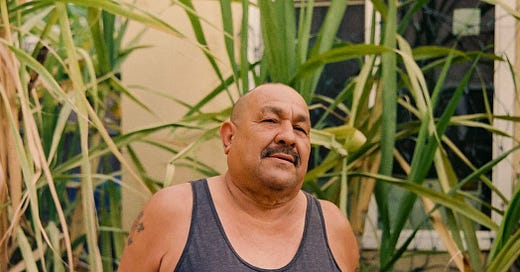




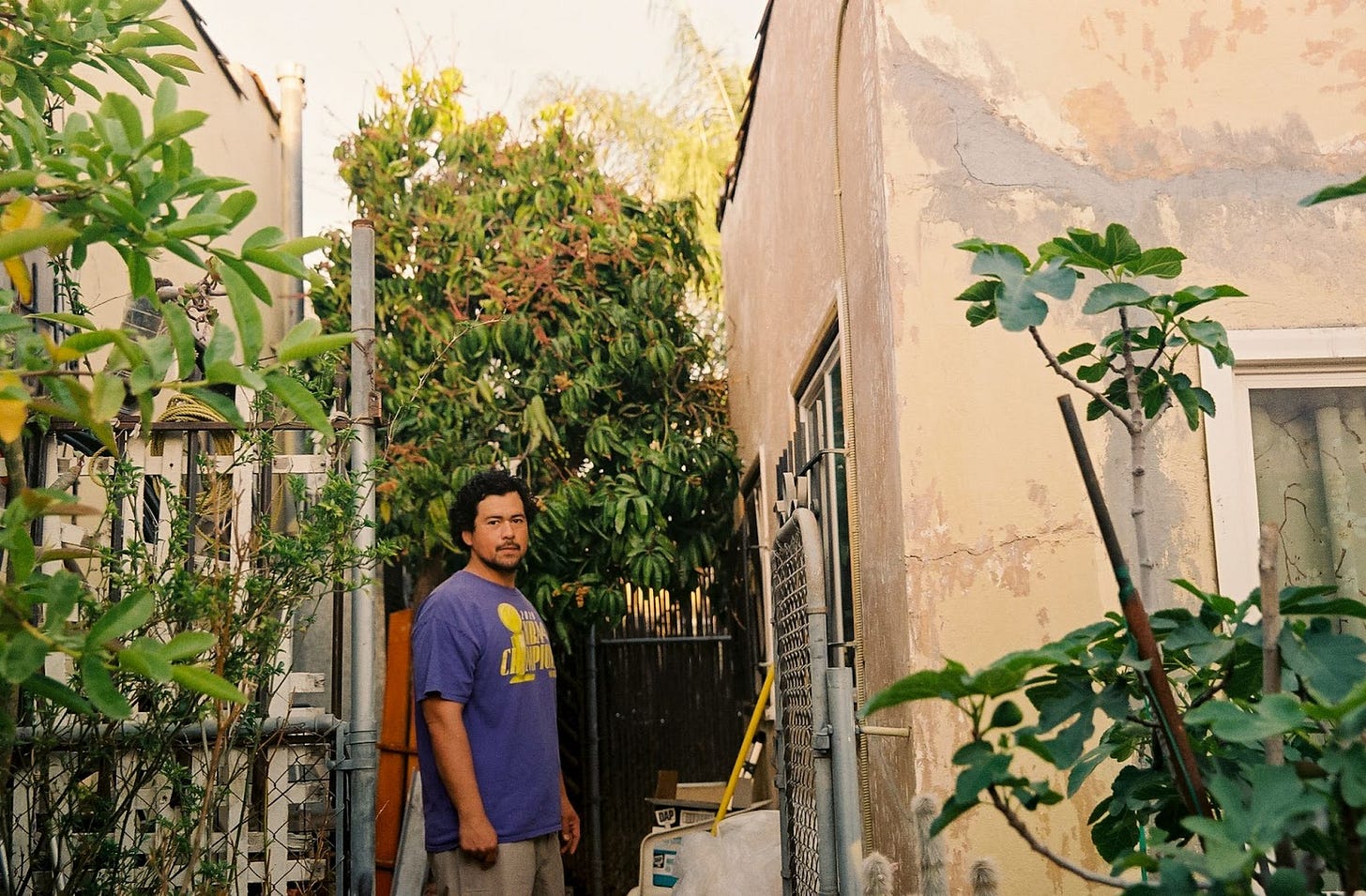
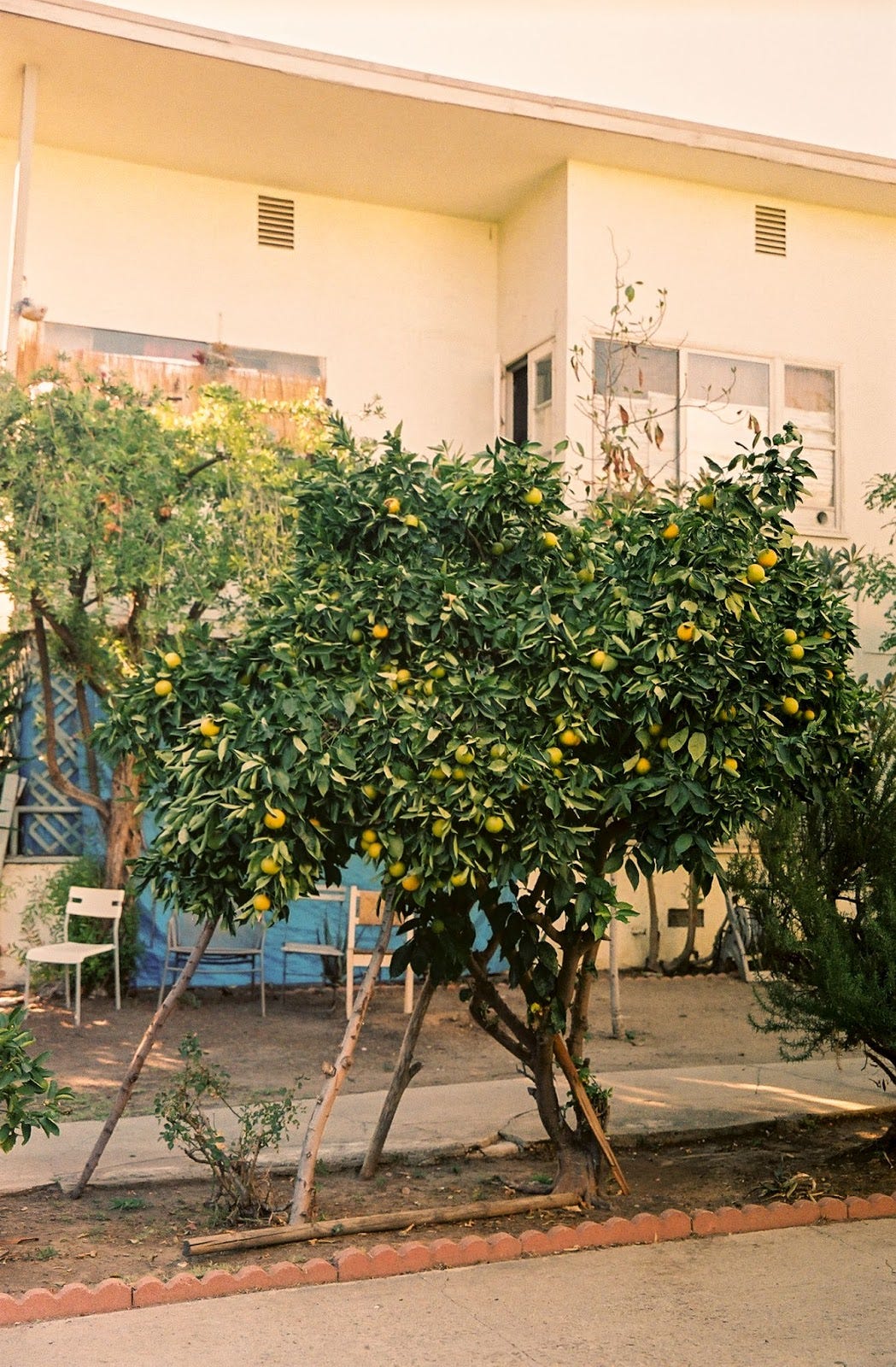
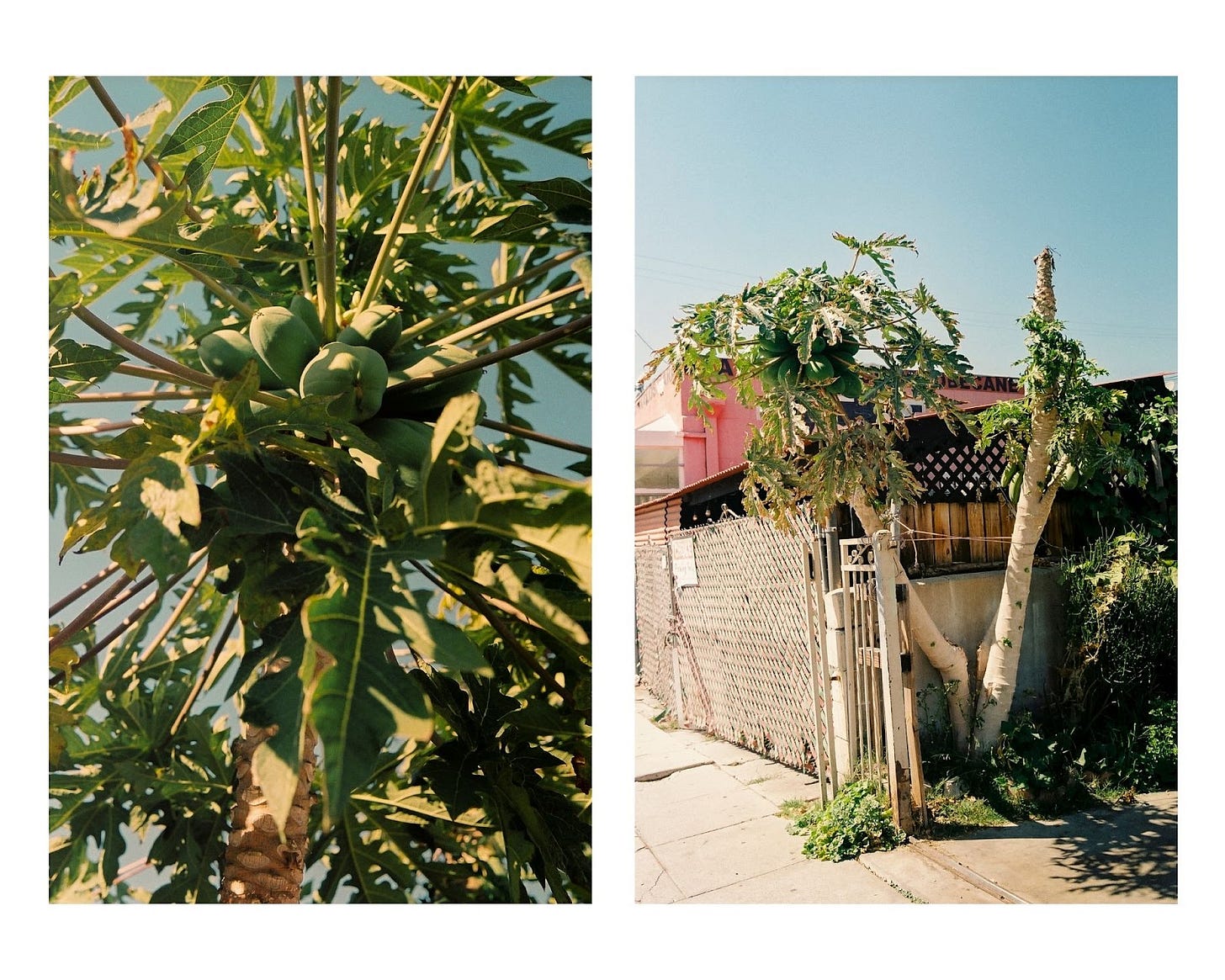

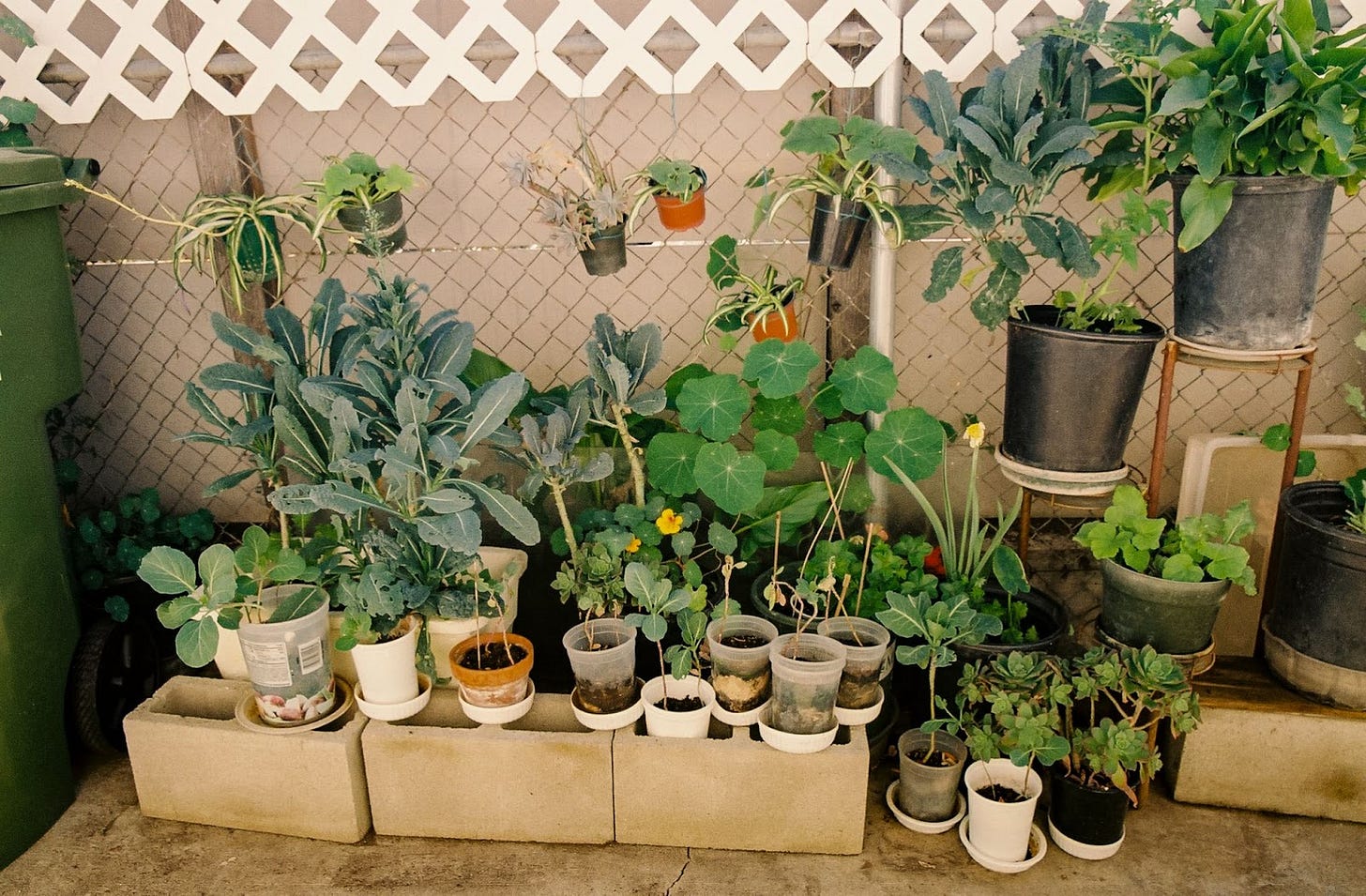
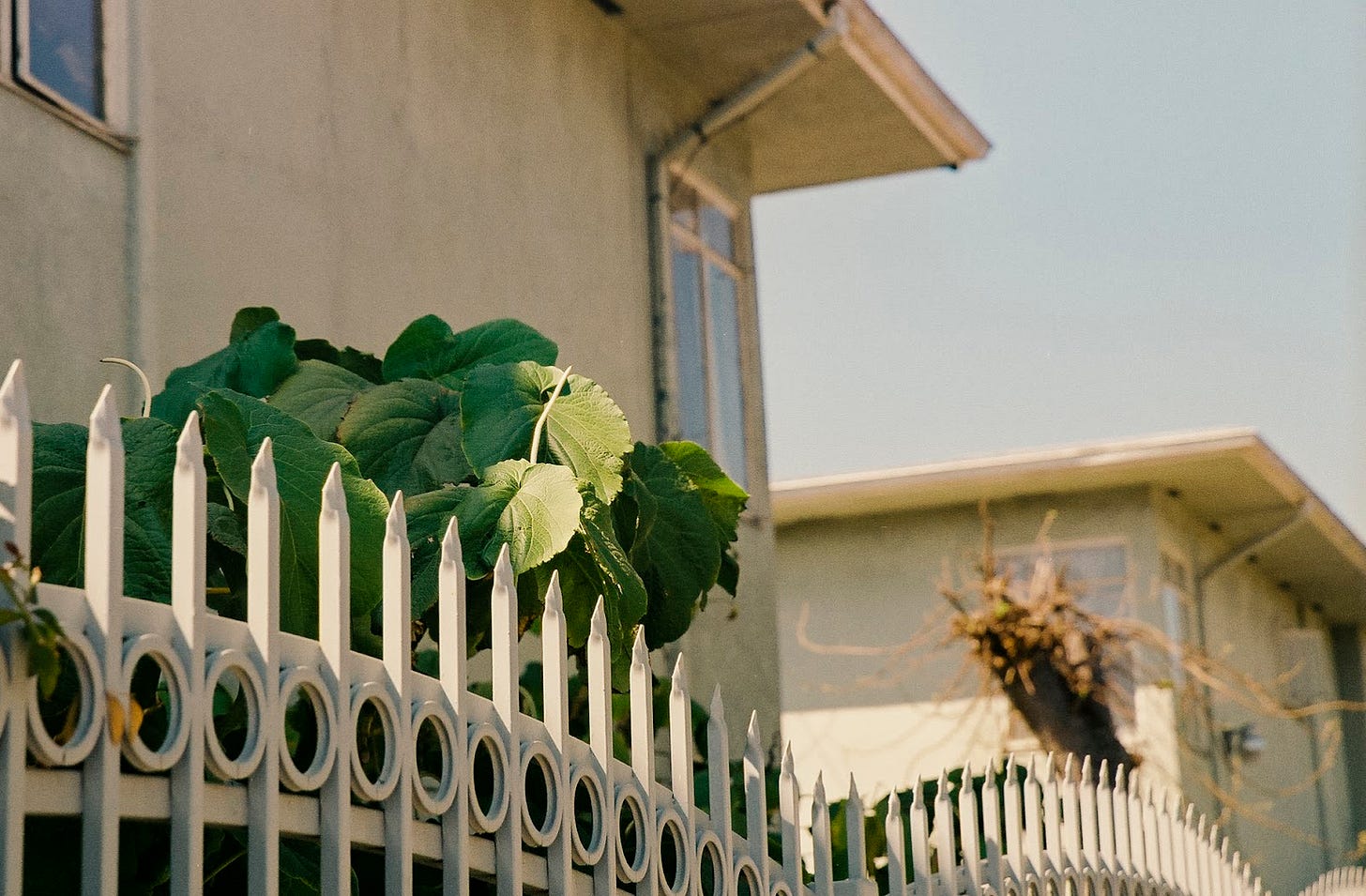

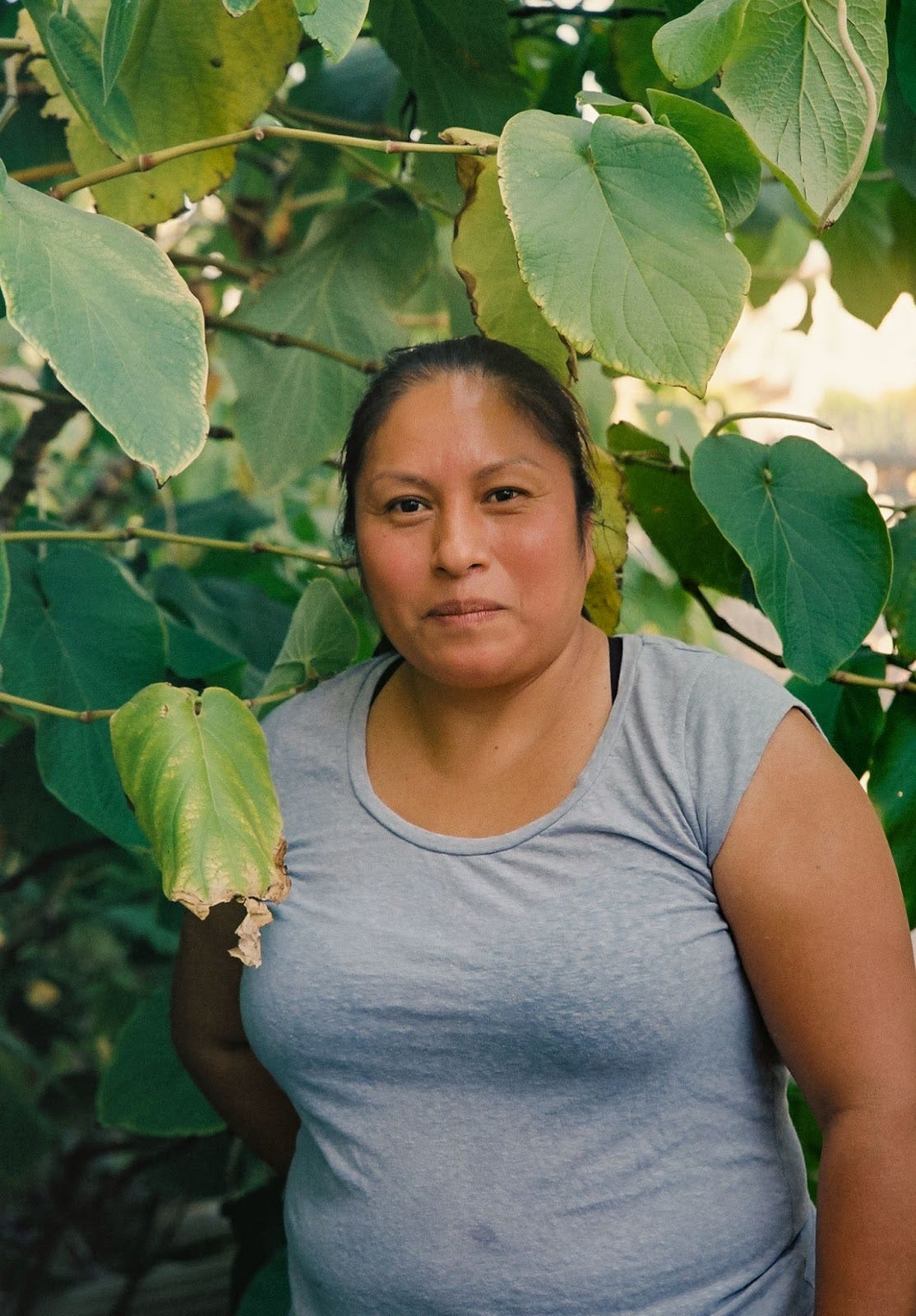
Nice story. There's a nice community garden at the LACC and they are holding an event on Earth Day at 10 am Friday 4/22 to promote the garden and raise awareness on food insecurity. If you want more info please email me at lorenzo.benet@gmail.com